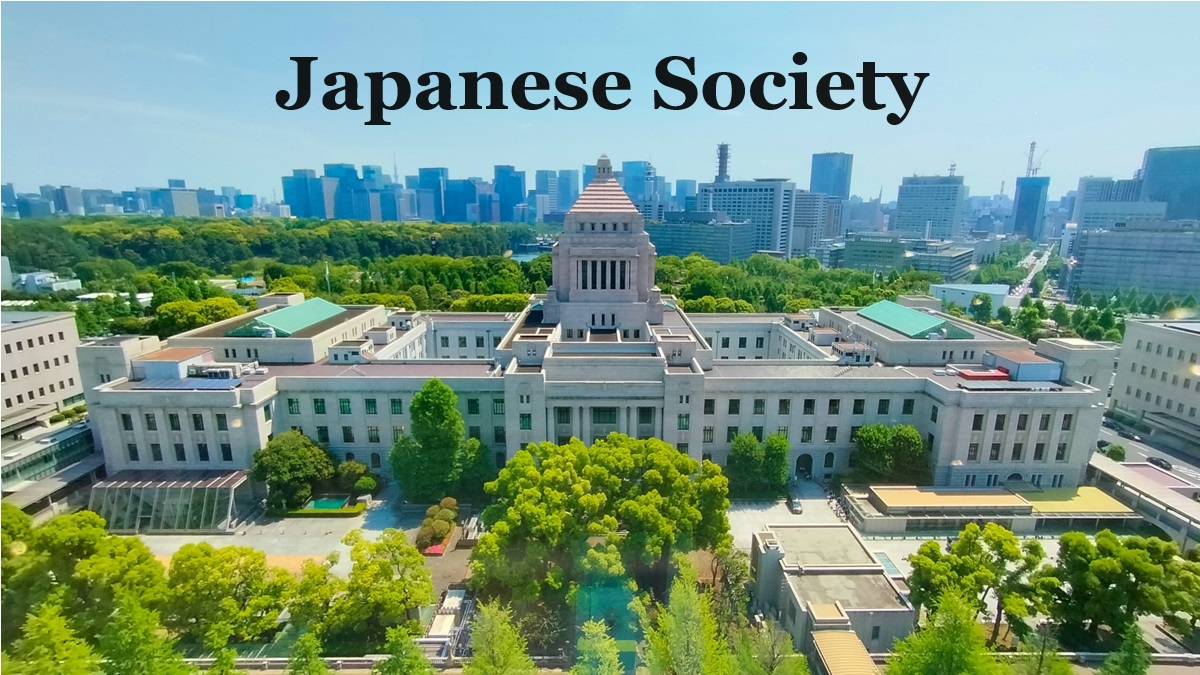Japanese society
Politics in Japan
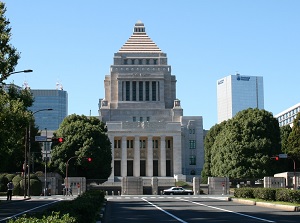
National Diet Building in Tokyo
Ten-no who is the Emperor of Japan has been the head of Japan since the ancient times.
But, under the current constitution of Japan, Ten-no is not "the head of the state" but "the symbol of the state".
Therefore, Ten-no can't take part in political affairs of Japan.
Only some actions such as declaring the opening of the Diet, the ceremonies for appointing the ministers, etc. are provided.
The parliamentary cabinet system is adopted in Japan.
So, the Prime Minister is substantially the head of Japan.
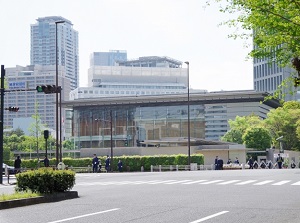
Prime Minister's Official Residence in Tokyo
Japanese Diet is in the center of Tokyo.
It consists of two Houses, namely the House of Representatives ("Shûgi-in" in Japanese, 465 seats) and the House of Councilors ("Sangi-in" in Japanese, 248 seats).
The former corresponds to the Lower House and the latter corresponds to the Upper House in many countries.
All members of the Houses are elected by Japanese people over 18 years old.
The Prime Minister is chosen from among the members of the Houses.
Then, the Prime Minister appoints the administrative ministers and forms the Cabinet.
Each prefectural governor, each mayor of the city, town or village, and the members of the assembly are also elected by the people in the area.
School System in Japan
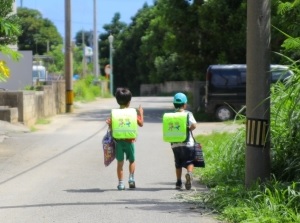
Elementary students returning to their home after school
In Japan, 6-year-old children enter elementary school.
(Many of them go to kindergarten for a few years before elementary school.)
The children go to elementary school for 6 years.
After that, they enter lower secondary school (junior high-school).
They learn in the school for three years.
Education through these schools is compulsory in Japan.
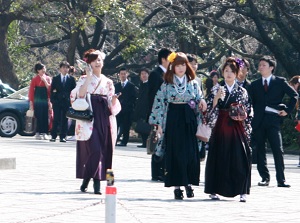
University students going to their graduation ceremony
But more than 98% of them go to high school.
And, they learn in high school for three years.
The 18-year-old students decide their career path.
About 70% of them go to university, colledge or institute.
The others get a job.
To enter a high school, university, and colledge, the entrance examination is held in most schools.
It is one of the trials for their lives.
Social insurance in Japan
In Japan, there are some social insurance systems such as pension, medical insurance, employment insurance, etc.
All Japanese people who reached a certain age have an obligation to participate in each insurance, and the insurance premium is collected.
So, all Japanese people can basically receive the pension from the age of 65.
And when Japanese people get treatment in any hospital, only 30% of the fee is charged by the insurance.
If you need to go to hospital during the trip in Japan, you must pay the expensive cost of the treatment.
Therefore, you should take out any overseas travel insurance before you come to Japan.
Population concentration in Tokyo area
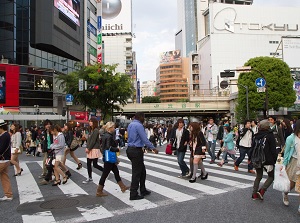
Scramble crossing in Shibuya in Tokyo
In Japan, there are three big city areas.
They are Tokyo, Osaka and Nagoya areas.
The population of Tokyo area is about 34 million, Osaka area is about 18 million, and Nagoya area is about 11 million.
The total population of these areas is about half of whole Japan.
Especially, Tokyo area has over a quarter of the total population of Japan within 80-kilometer radius.
The area includes Yokohama, Kawasaki, Saitama, Chiba with a million or higher population.
The people who want to live in such big city area must solve a difficult problem.
If a person hopes to live near central part of the city, the huge amounts of money to buy a house are needed.
On the other hand, if a person hopes to buy a house at a reasonable price, the target house is far away from the city.
Of course, the solution for many common people is the latter.
So, the commuting time is very long.
In Tokyo area, if it takes within one hour, the person is happy.
Some people spend over two hours to go to their workplaces.

Rainbow Bridge in Odaiba area in Tokyo
Additionally the living space in Japan is narrow.
Once Westerner said "It's like a rabbit hutch".
In the city area, we can get easily a "Mansion" as living space.
Mansion in Japanese don't mean luxurious house but condominium.
Generally, it has two or three rooms and dining room with kitchen, and if it has four rooms, it is in large class.
The general price of such "Mansion" is four times more expensive than the annual income of the workers.
In the urban areas, detached houses are main.
However, the house area is small and the number of rooms in the house is not large.
Total population of Japan is rapidly decreasing.
But, though the life around Tokyo is a little tight, the population is increasing.
Government organizations, the headquarters of many large enterprises, main mass communications, etc. concentrate in Tokyo.
So, population inflow into Tokyo area is still continuing now.
This means that the the population of all areas in Japan except for Tokyo is rapidly decreasing.
The aging in the areas is advancing and the declining birth rate doesn't stop.
In a few decades, Japan will be a whole different country.

